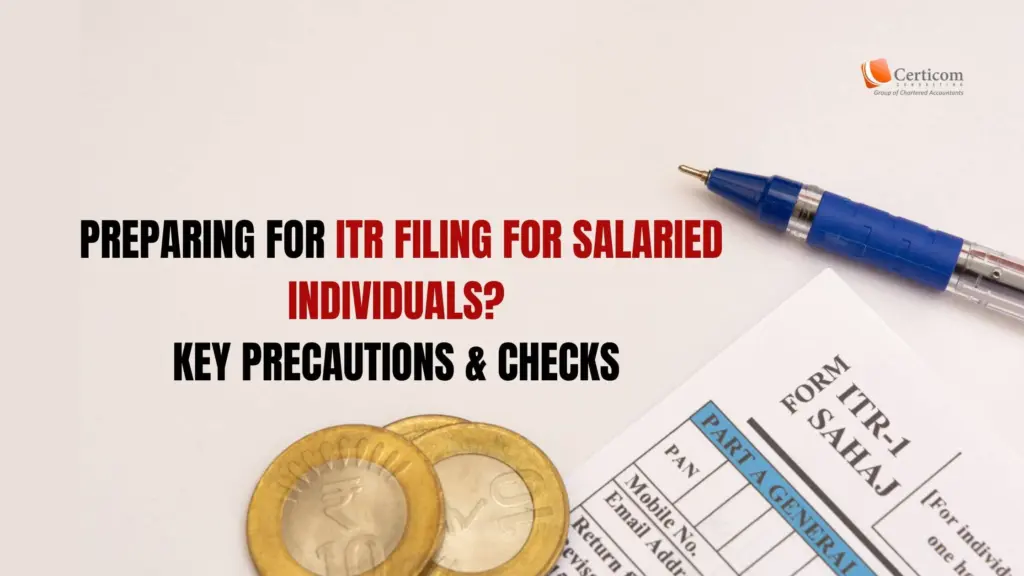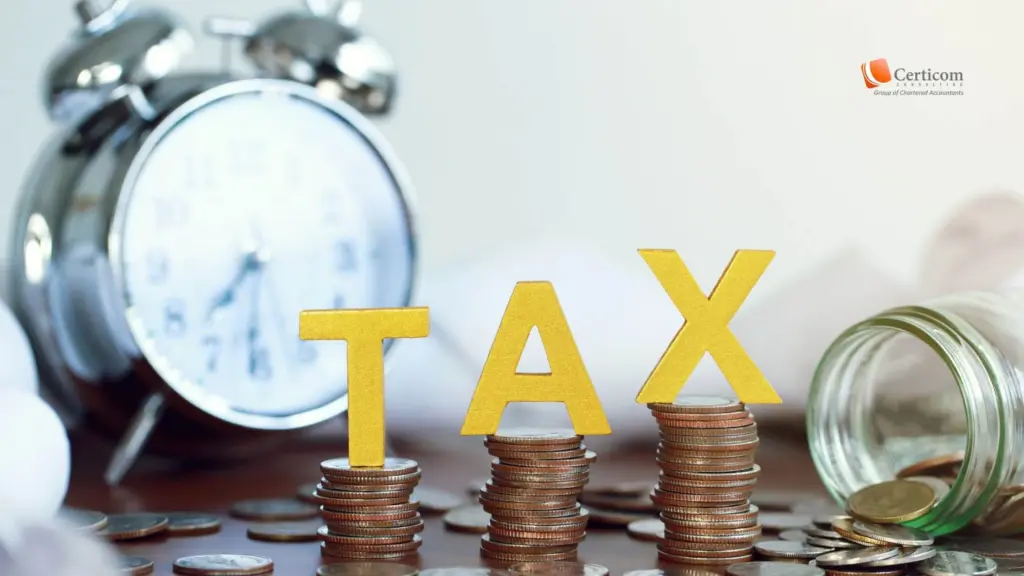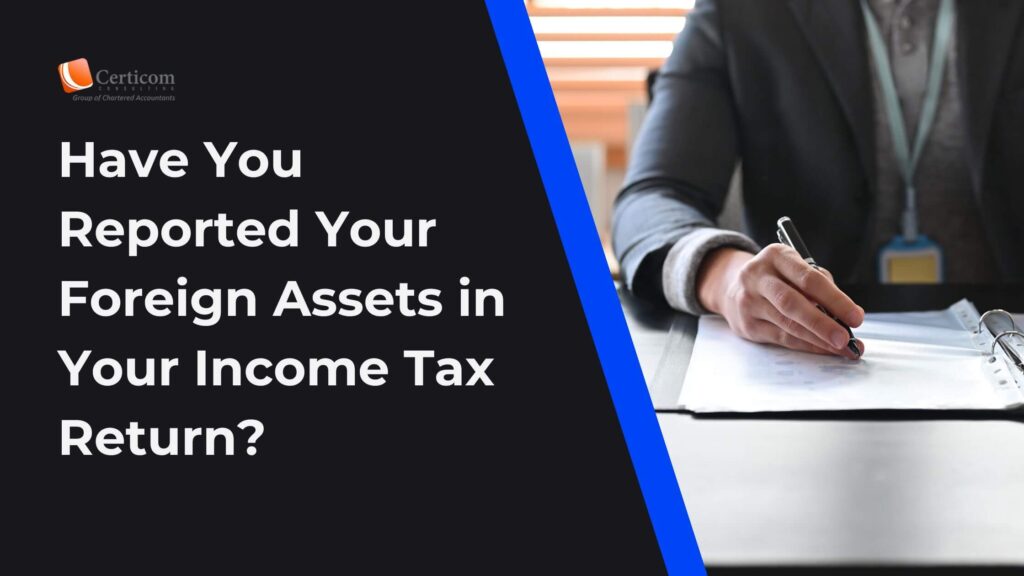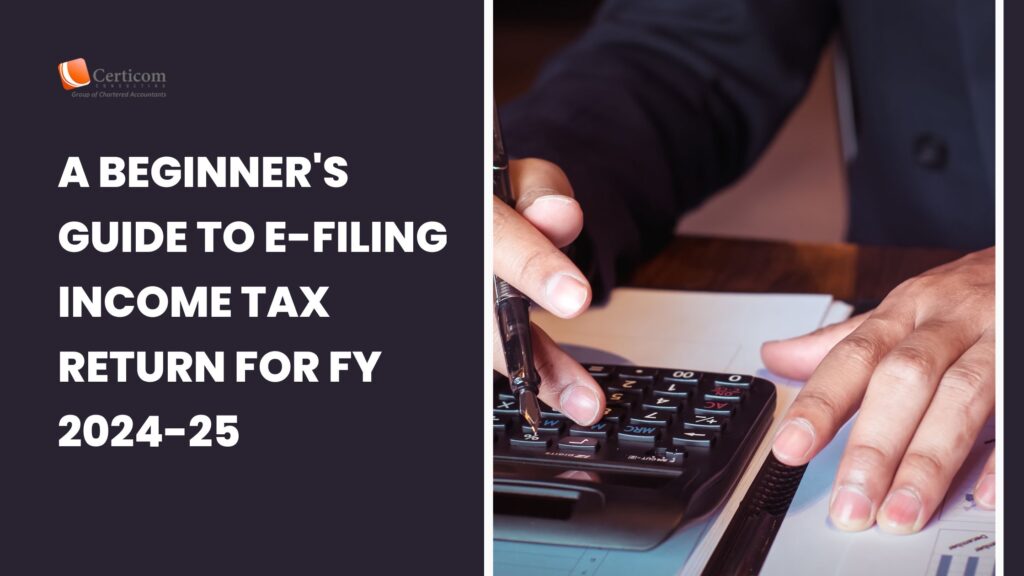A Comprehensive Guide: Precautions for Salaried Individuals Filing ITR

Filing Income Tax Returns (ITR) is a task that requires careful attention. Salaried individuals especially need to keep certain crucial points in mind while preparing their ITR. This comprehensive guide elucidates these essential aspects.
1. Identifying the Correct ITR Form
Determining the right ITR form for your tax situation is the first step. For the Assessment Year (AY) 2023-24, ITR – 1 or Sahaj, is for resident individuals with a total income that includes:
- Salary or pension income
- Income from one house property (excluding cases where loss is brought forward from previous years)
- Income from other sources (excluding lottery winnings and income from racehorses)
- Agricultural income up to Rs 5000
On the other hand, ITR-2 is for individuals or Hindu Undivided Families (HUF) whose total income comprises:
- Salary or pension income
- Income from multiple properties
- Income from other sources including lottery winnings and income from racehorses
- Individuals holding directorship in a company
- Investments in unlisted equity shares at any time during the financial year
- Being a resident not ordinarily resident (RNOR) and non-resident
- Income from capital gains
- Foreign income or assets
- Agricultural income exceeding Rs 5,000

2. Reviewing Form 16 Thoroughly
Form 16 is a TDS (Tax Deducted at Source) certificate that your employer issues detailing your salary income and tax deducted. Ensure that you compare the salary and deductions mentioned in Form 16 with Form 26AS and your proofs. Also, check deductions like interest on self-occupied house property and 80CCD(1B) NPS, which you may not have submitted to the employer but can still claim.
3. Incorporating All Other Incomes
Be sure to account for all other income like bank interest, fixed deposit interest, capital gains, rental income, and income from shares. Cross-verify and ensure that all of these income sources are duly reflected in your ITR.
4. Downloading and Checking Form 26AS, AIS, and TIS
Form 26AS is your tax credit statement, which shows the tax that has been deducted from your income and deposited with the government by your deductor. AIS (Annual Information Statement) and TIS (Tax Information Statement) contain additional information about your financial transactions. You should cross-check whether all entries in these forms are accounted for in your ITR.
Remember, if a particular income is mentioned in these forms but doesn’t belong to you, you can ignore it. At the same time, even if some income is not reflected in these forms, it must be reported in your ITR.
5. Validating All Deductions
Ensure that all deductions are checked carefully against the proofs you have. In some cases, your deductions may not appear in Form 16, leading to excess tax deduction. In such instances, you can claim these deductions while filing your ITR. Importantly, avoid reporting any false deductions that you did not make during the financial year.
6. Choosing Between the New and Old Tax Regime
The Indian government introduced a new optional tax regime in Budget 2020. Under this, individuals can opt for lower tax rates on the condition of forgoing certain exemptions and deductions available under the old regime. It’s crucial to compare the tax liabilities under both regimes and select the one beneficial for you.

7. Avoiding Hastened Filing
One common mistake people make is filing their ITR in a hurry. Such haste can lead to errors, which might result in wrong filing or notices from the Income Tax Department. Therefore, always take your time to prepare your ITR and consult a tax professional if you have any queries.
Read More: HOW TO SAVE INCOME TAX ON SALARY?
In conclusion, keeping these precautions in mind can help you file your ITR accurately and smoothly. Remember, paying taxes is not just about compliance; it’s also about contributing to the nation’s development. So, do it right!
Related Post
A Beginner’s Guide to E-Filing Income Tax Return for FY 2024-25
Faking Tax Deductions? You Could Be Penalised Up To 200% Under Income Tax Rules
Book A One To One Consultation Now For FREE
How can we help? *




